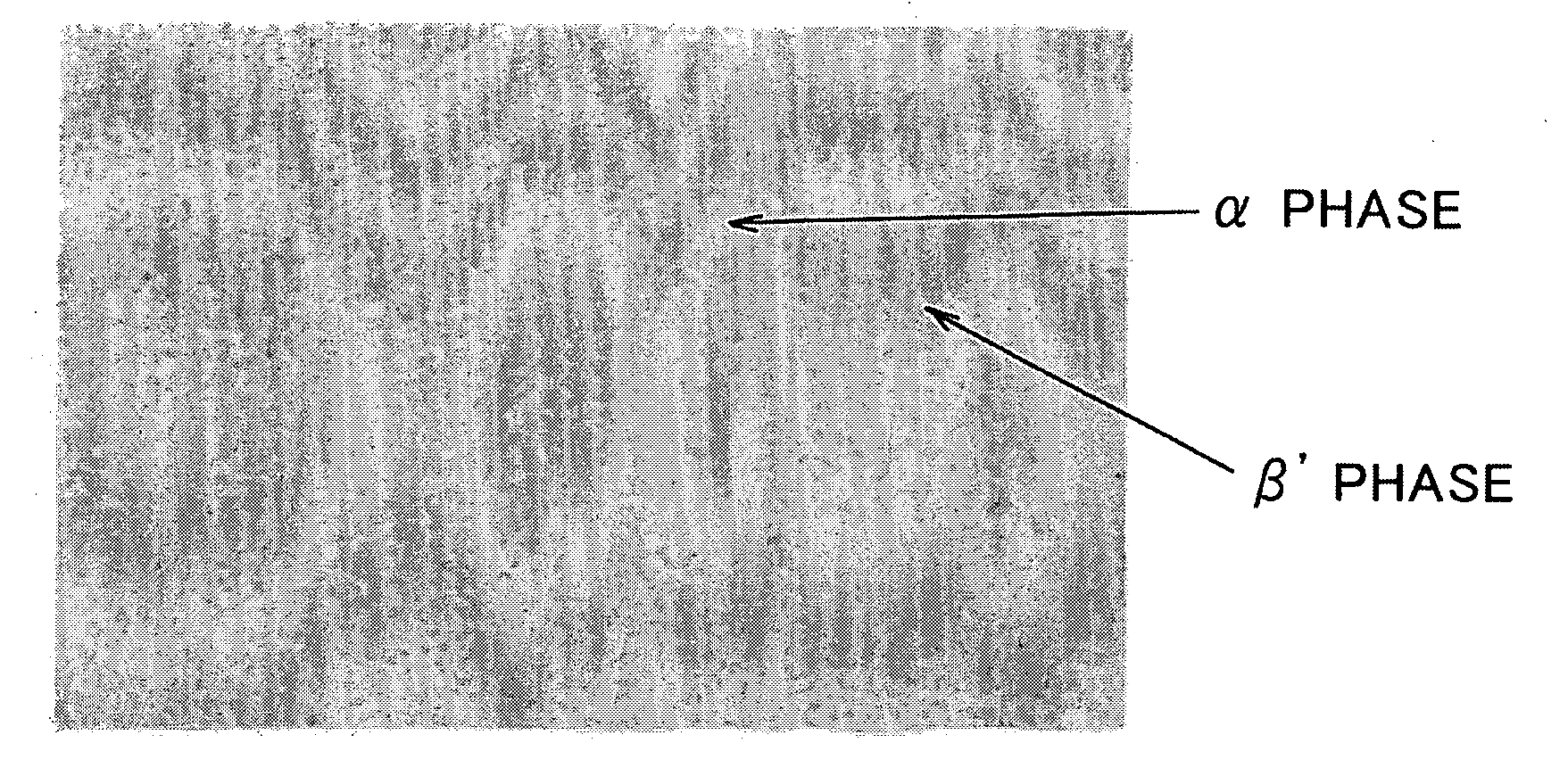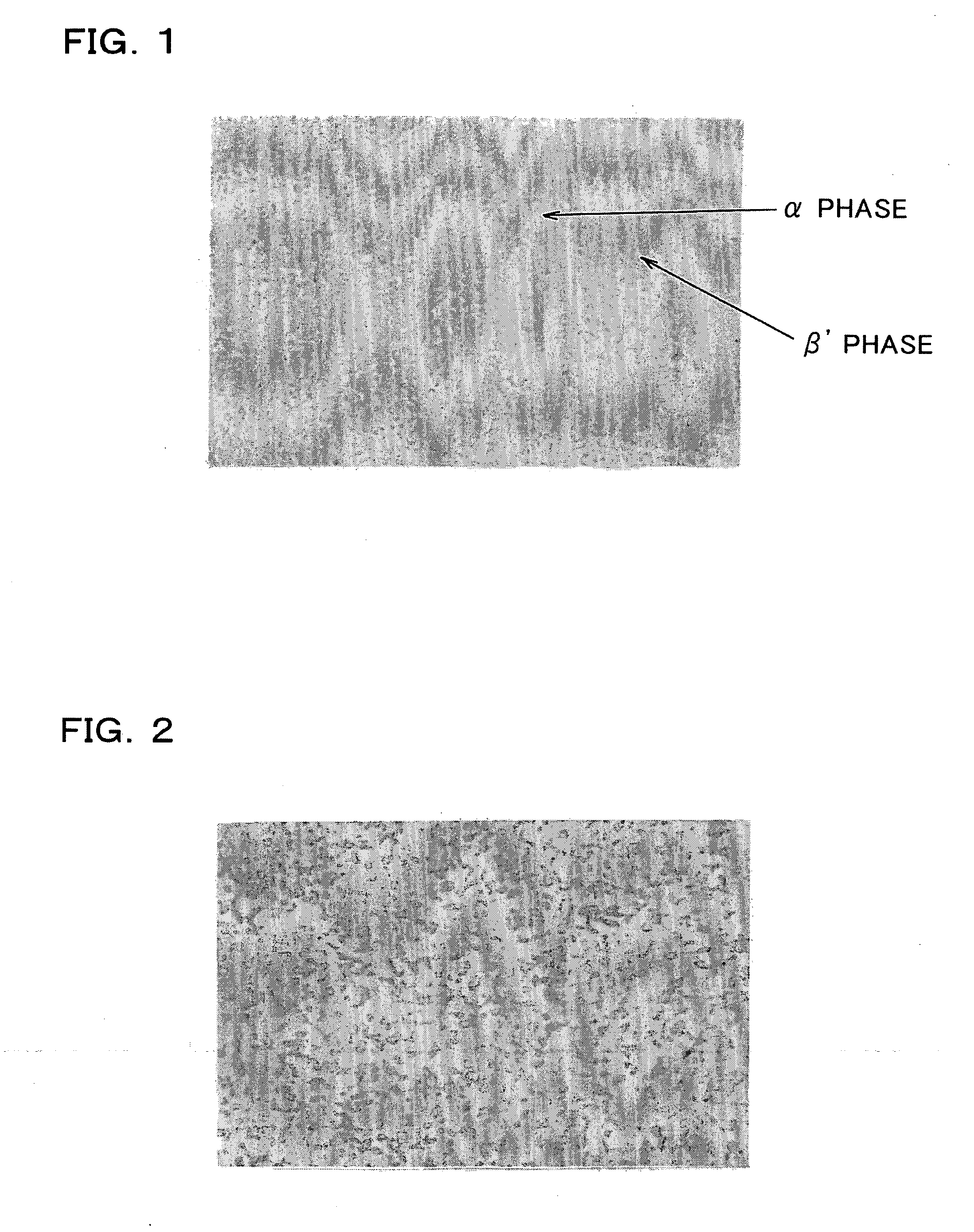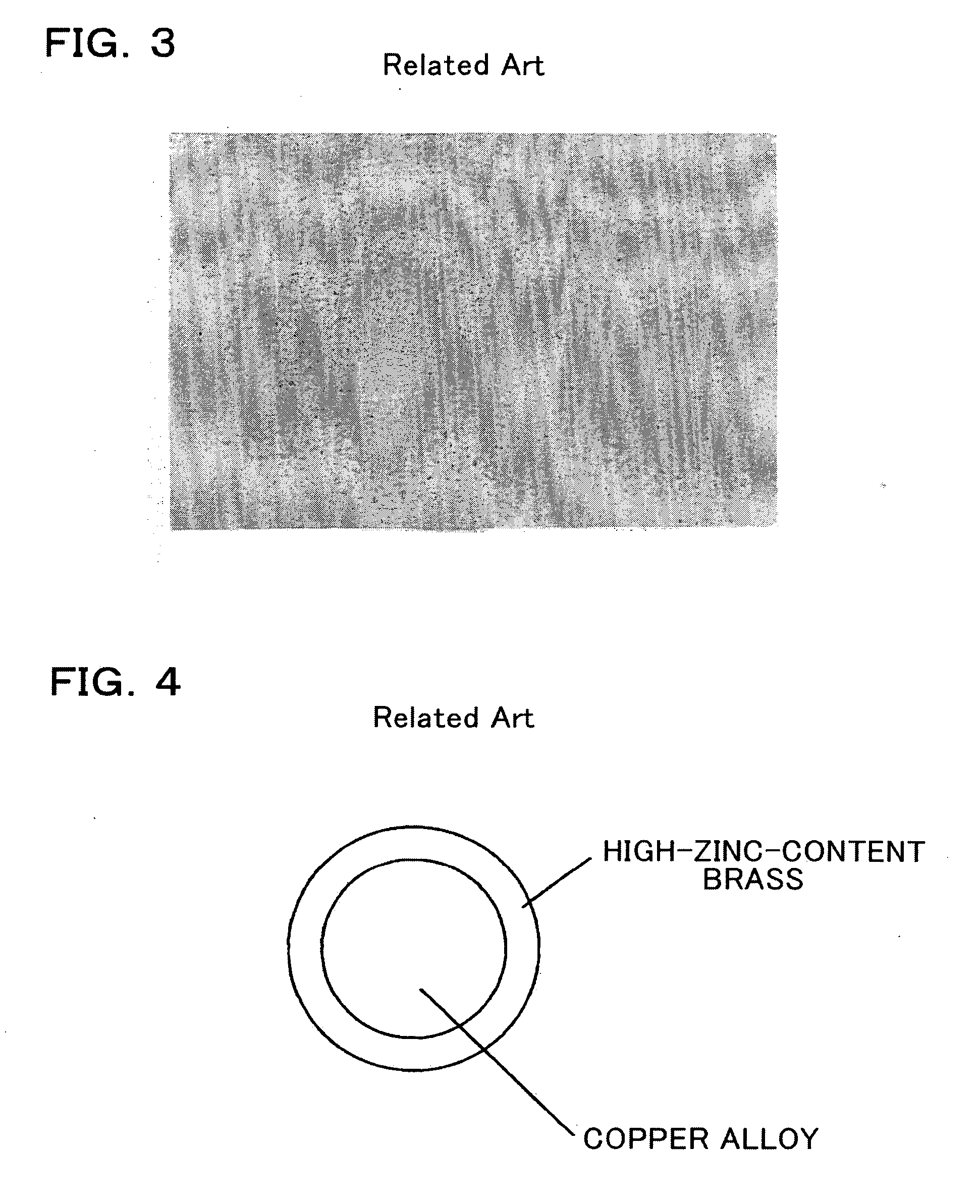Electrode wire for wire electric discharge machining
a technology of electrode wire and electric discharge, which is applied in the direction of electrical-based machining electrodes, welding apparatus, manufacturing tools, etc., can solve the problems of increasing the manufacturing cost of electrode wires, not necessarily sufficient from the viewpoint of machining speed, and the inability to substantially perform wire drawing without electrode wires. , to achieve the effect of increasing cos
- Summary
- Abstract
- Description
- Claims
- Application Information
AI Technical Summary
Benefits of technology
Problems solved by technology
Method used
Image
Examples
example 1
[0056] Examples of the electrode wire for wire electric discharge machining of the present invention are described below in detail.
[0057] Copper and zinc ingots were dissolved, and an alloy was produced so that the average zinc content per unit volume was 42.5%.
[0058] The resulting copper-zinc alloy was hot-extruded while taking crystal growth into consideration, and repeatedly subjected to cold drawing and annealing in stages while reducing the amount of precipitated β phase and nonuniform dispersion to obtain an alloy wire with a diameter of φ 0.9 mm.
[0059] The resulting alloy wire was cold-drawn to a diameter of φ 0.25 mm and 0.30 mm using a continuous slip drawing machine.
[0060] The resulting alloy wires were subjected to final electric annealing to obtain electrode wires of the present invention and reference electrode wires shown in Table 1.
[0061] The electrode wires of the present invention shown in Table 1 are examples in which the electrode wires are drawn to a final d...
example 2
[0063] Copper and zinc ingots were dissolved, and alloys were produced so that the average zinc content per unit volume was 43.0% and 42.0%. Electrode wires of the present invention with a diameter of 0.25 mm were produced in the same manner as in Example 1.
[0064] The electrode wires of Example 1, Example 2, and Reference Example 1, and electrode wires containing only the α phase and having a zinc content of 37% as conventional electrodes were installed in a wire electric discharge machine (“RA90AT” manufactured by Mitsubishi Electric Corporation). The machining speed when machining a die steel (SKD-11) with a thickness of 50 mm under standard setting conditions was measured.
[0065] The tensile strength was also measured using a tensile tester.
[0066] Table 1 shows the target Zn content of the electrode wires of the present invention and the reference electrode wires, the speed ratio with respect to the conventional electrodes (100%), the tensile strength, and wire evaluation resul...
PUM
| Property | Measurement | Unit |
|---|---|---|
| Fraction | aaaaa | aaaaa |
| Tensile strength | aaaaa | aaaaa |
| Tensile strength | aaaaa | aaaaa |
Abstract
Description
Claims
Application Information
 Login to View More
Login to View More - R&D
- Intellectual Property
- Life Sciences
- Materials
- Tech Scout
- Unparalleled Data Quality
- Higher Quality Content
- 60% Fewer Hallucinations
Browse by: Latest US Patents, China's latest patents, Technical Efficacy Thesaurus, Application Domain, Technology Topic, Popular Technical Reports.
© 2025 PatSnap. All rights reserved.Legal|Privacy policy|Modern Slavery Act Transparency Statement|Sitemap|About US| Contact US: help@patsnap.com



